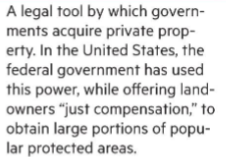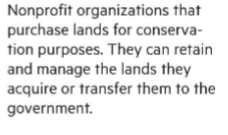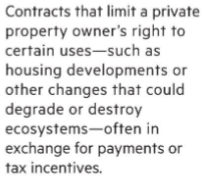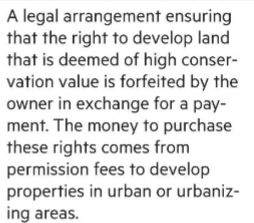Conservation
1/45
There's no tags or description
Looks like no tags are added yet.
Name | Mastery | Learn | Test | Matching | Spaced |
|---|
No study sessions yet.
46 Terms
physical alteration of habitats
Most severe human impact on biodiversity is from this - agriculture, deforestation, and urbanization
fragmented
habitat alteration that has caused many species have lost population size
and genetic diversity necessary for reproduction and viability
deforestation
(clearing of areas of
forested land) is destroying habitat for
many land-based plants and animals,
and causes soil erosion
edge effects
occur where two or more
types of habitats come together
(meadow or human development next
to forest), usually resulting in less
biodiversity
overexplotation
human impact that describes the effect on fish and plains bison
invasive species
When foreign species are introduced to new
habitat, natural predators are not often
present
instrumental value
The worth of something based on its utility for human
purposes
intrinsic value
The worth of something in and of itself, regardless of
human use or benefit.
provisioning services
goods ecosystems
supply for human use (food, water, timber,
medicine)
regulating services
natural processes that
stabilize conditions (climate regulation, water
purification, flood control)
supporting services
fundamental processes
that sustain all others (nutrient cycling, soil
formation, photosynthesis)
cultural services
non-material benefits that
enrich life (recreation, aesthetics, spiritual
value)
value chains
track how ecosystem goods
and services (e.g., timber, fisheries,
pollination) generate value through
production, trade, and consumption. Shows
how nature is embedded in markets.
replacement costs
estimate the expense
of substituting lost ecosystem functions
with artificial or technological solutions
(e.g., building a water treatment plant to
replace wetland purification).
willingness to pay
surveys or market
behavior reveal how much people are
prepared to pay to preserve or restore
ecosystems (e.g., clean air, scenic
landscapes, endangered species)
size, connectivity, and buffers
effectiveness of a preserve depends on these 3 factors
size
larger areas sustain more species
and healthier populations
connectivity
wildlife corridors and
nearby reserves allow migration and
gene flow.
buffers
surrounding zones shield core
habitats from external pressures
national park service
Protect areas of scenic, historical, or
scientific importance
recreation
original focus of national park service
national monuments and recreation areas
Protect areas of historic, cultural, or
natural significance, managed by several agencies
national wildlife refuges
Established to conserve fish, wildlife, and plant
species and their habitats.
national forests
Established to manage forests, grasslands,
and watersheds for multiple uses. Managed by the U.S. Forest Service (USFS)
under the Department of Agriculture
bureau of land management lands
Established to manage grazing and mining on federal
lands.
wilderness areas
Designated as the “most protected”
federal lands in the U.S., managed by multiple agencies
aquatic and marine areas
U.S. federal government designates ocean
shorelines and islands for protection,
working with state, tribal, and local
governments.
boundaries, ecological island, edge effects
limitations of protected areas
ecological island effect
limitation of preserves that causes Higher risk of disease, Inbreeding from limited gene flow, Less ability to adapt to climate change
edge effects
causes boundaries vulnerable to
predators, invasives, or human disturbance.
wildlife corridors
connect habitats for
migration and gene flow
buffer zones
reduce outside pressures on
core reserves.
habitat networks
link multiple protected
areas across the landscape.
eminent domain

land trusts

conservation easements

tradeable development rights

payments for ecosystem services

lacey act
prohibits trade in wildlife,
fish, or plants taken illegally, establishing U.S.
Fish and Wildlife Service to enforce it
migratory bird treaty act
protects more than 800 bird species
marine mammal protection act
protects whales, dolphins, seals, and manatees
endnagered species act
protects
both endangered plants and animals from
hunting and trapping
Convention on International Trade in
Endangered Species of Wild Fauna and
Flora
international agreement
banning hunting, capturing, and selling of
endangered and threatened species
convention on biological diversity
international agreement committing
countries to pass laws to expand protected
areas, restore degraded ecosystems, and
ensure sustainable and equitable human
use of ecosystem services
sustainable forest management
Balance forest use for harvest with long-
term biodiversity protection.
ecological restoration
process of
assisting recovery of an entire ecosystem